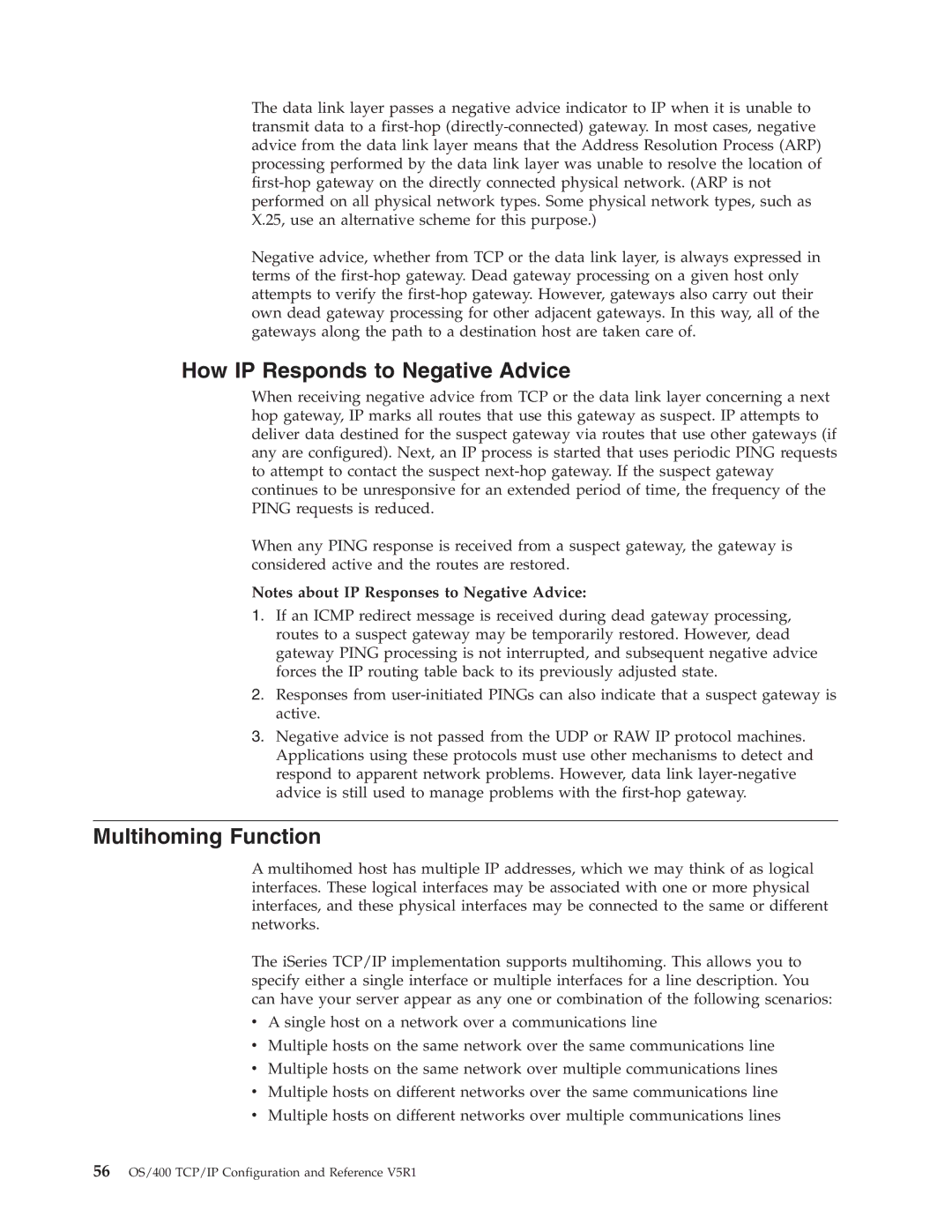The data link layer passes a negative advice indicator to IP when it is unable to transmit data to a
Negative advice, whether from TCP or the data link layer, is always expressed in terms of the
How IP Responds to Negative Advice
When receiving negative advice from TCP or the data link layer concerning a next hop gateway, IP marks all routes that use this gateway as suspect. IP attempts to deliver data destined for the suspect gateway via routes that use other gateways (if any are configured). Next, an IP process is started that uses periodic PING requests to attempt to contact the suspect
When any PING response is received from a suspect gateway, the gateway is considered active and the routes are restored.
Notes about IP Responses to Negative Advice:
1.If an ICMP redirect message is received during dead gateway processing, routes to a suspect gateway may be temporarily restored. However, dead gateway PING processing is not interrupted, and subsequent negative advice forces the IP routing table back to its previously adjusted state.
2.Responses from
3.Negative advice is not passed from the UDP or RAW IP protocol machines. Applications using these protocols must use other mechanisms to detect and respond to apparent network problems. However, data link
Multihoming Function
A multihomed host has multiple IP addresses, which we may think of as logical interfaces. These logical interfaces may be associated with one or more physical interfaces, and these physical interfaces may be connected to the same or different networks.
The iSeries TCP/IP implementation supports multihoming. This allows you to specify either a single interface or multiple interfaces for a line description. You can have your server appear as any one or combination of the following scenarios:
vA single host on a network over a communications line
vMultiple hosts on the same network over the same communications line
vMultiple hosts on the same network over multiple communications lines
vMultiple hosts on different networks over the same communications line
vMultiple hosts on different networks over multiple communications lines
56OS/400 TCP/IP Configuration and Reference V5R1
